For fall-off-the-bone tender ribs, cook to an internal temperature of 190°F-205°F (88°C-96°C). This precise range transforms tough collagen into gelatin, creating that perfect melt-in-your-mouth texture without drying out the meat. Cooking below 190°F leaves ribs chewy; exceeding 205°F risks dry, stringy results.
Why Temperature Matters for Perfect Ribs
Understanding rib temperature science is the difference between tough, disappointing ribs and restaurant-quality results. At 190°F-205°F, connective tissues fully break down while retaining optimal moisture. This isn't guesswork—it's food science you can rely on for consistent BBQ success.
The Evolution of Rib Temperature Standards
Modern precision stems from decades of culinary science refinement. Understanding this progression explains why 190–205°F is now the universal benchmark:
- Pre-1950s: Pitmasters relied solely on tactile tests ("bend test") and cooking duration. Without thermometers, consistency was impossible. Source: "Barbecue: The History of an American Institution" Historical Context of Early BBQ
- 1985: Taylor Precision introduced affordable digital instant-read thermometers, enabling home cooks to monitor internal temperatures accurately for the first time. Source: Thermoworks Historical Archive Timeline of Thermometer Innovation
- 2005: Food scientists like Greg Blonder published collagen breakdown research, proving 190°F+ triggers complete gelatinization. This shifted BBQ from tradition to evidence-based practice. Source: AmazingRibs.com Collagen Conversion Science
- 2012: Kansas City Barbeque Society (KCBS) incorporated temperature verification into judging protocols after studies showed texture correlation. Source: KCBS Competition Guidelines Official Competition Standards
| Temperature Range | Texture Result | Best For |
|---|---|---|
| Below 180°F (82°C) | Tough and chewy | Not recommended |
| 180–190°F (82–88°C) | Firm with slight chew | Sliced-style ribs |
| 190–205°F (88–96°C) | Melt-in-your-mouth tenderness | Classic BBQ ribs |
| Above 205°F (96°C) | Dry and stringy | Avoid for most methods |

Different Rib Cuts & Their Perfect Temperatures
Not all ribs reach perfection at the same temperature. Tailoring your target temp to the cut ensures optimal results:
- Baby back ribs: Leaner cut needing slightly lower temps—190–195°F preserves moisture
- St. Louis style ribs: Higher fat content allows for 195–200°F for balanced tenderness
- Beef short ribs: Require higher temps at 200–205°F to fully render connective tissue
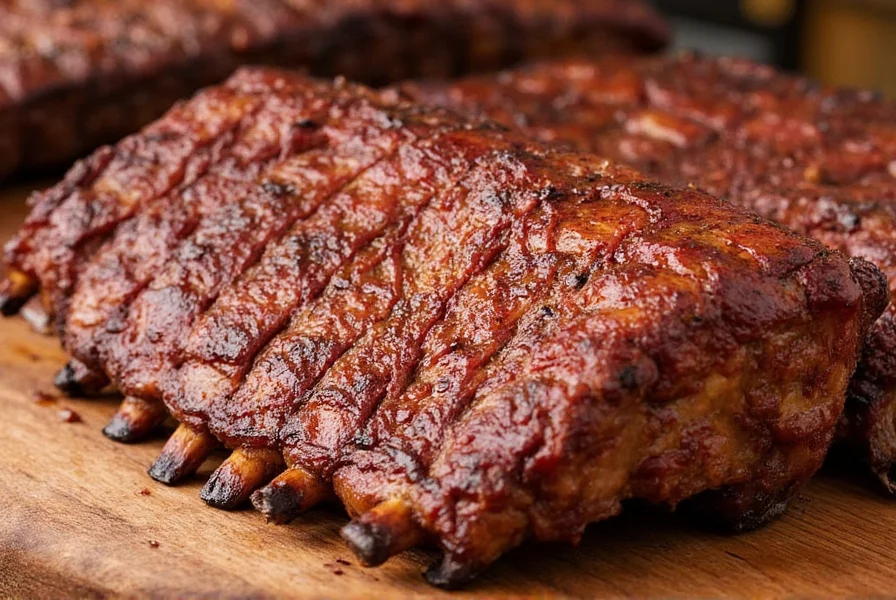
Cooking Method Temperature Guidelines
Your cooking method affects how temperature transfers to the meat. These target settings ensure consistent results:
Smoker Temperature Settings
Set smoker to 225–250°F for low-and-slow cooking. Monitor internal rib temperature rather than smoker temp—the magic happens when meat hits 190–205°F internally.
Oven Roasting Temperatures
Preheat oven to 275–300°F. Wrap ribs in foil after 2 hours, then check internal temperature hourly until reaching 190–205°F.
Grill Temperature Zones
Maintain indirect heat zone at 225–250°F. Position ribs away from direct flame and monitor internal temperature with a probe thermometer.
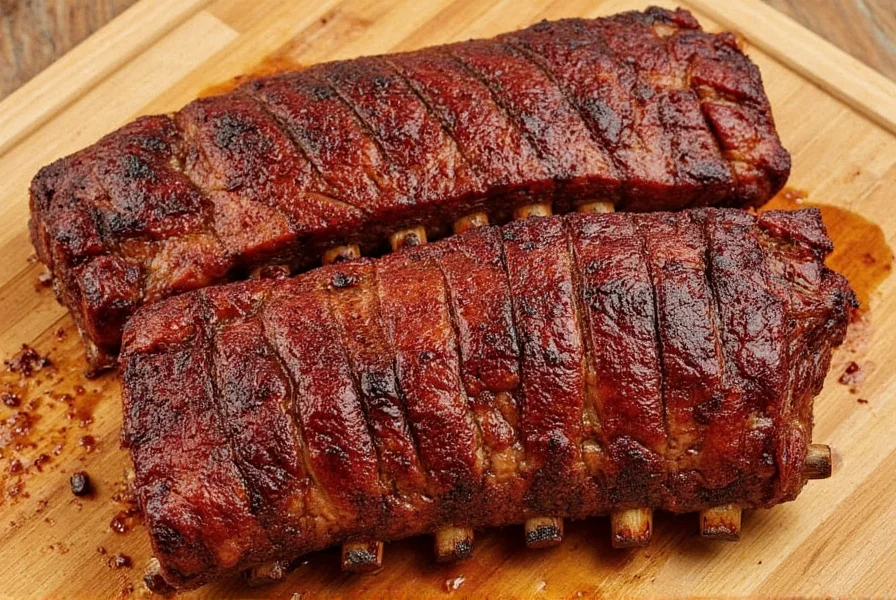
When Temperature Rules Don't Apply: Critical Context Factors
The 190–205°F rule assumes standard conditions. These variables require adjustments:
- High Altitude (>3,000 ft): Lower atmospheric pressure reduces boiling point, slowing collagen breakdown. Increase target temperature by 5°F (195–210°F) and extend cooking time 15%. Source: USDA Food Safety Guidelines High-Altitude Cooking Adjustments
- Humidity Extremes: Below 40% humidity accelerates surface drying, risking premature bark formation. In arid climates, target 190–195°F; above 70% humidity, use 195–200°F to prevent steamed texture. Source: Journal of Food Science Humidity Impact on Meat Collagen
- Meat Marbling Variability: Exceptionally lean heritage-breed ribs (e.g., Mangalitsa) require 5°F lower targets to prevent dryness. Standard commercial ribs follow the 190–205°F range. Always verify with the bend test. Source: Meat Science Journal Intramuscular Fat and Cooking Loss Study
Essential Temperature Tools for Perfect Ribs
Accurate temperature measurement separates good ribs from great ribs:
- Dual-probe thermometer: Monitor both ambient and internal temperatures simultaneously (Maverick ET-733A recommended)
- Instant-read thermometer: Verify final temperature before removing from heat (Thermapen Mk4)
- Leave-in probe thermometer: Track temperature progress without opening smoker/grill
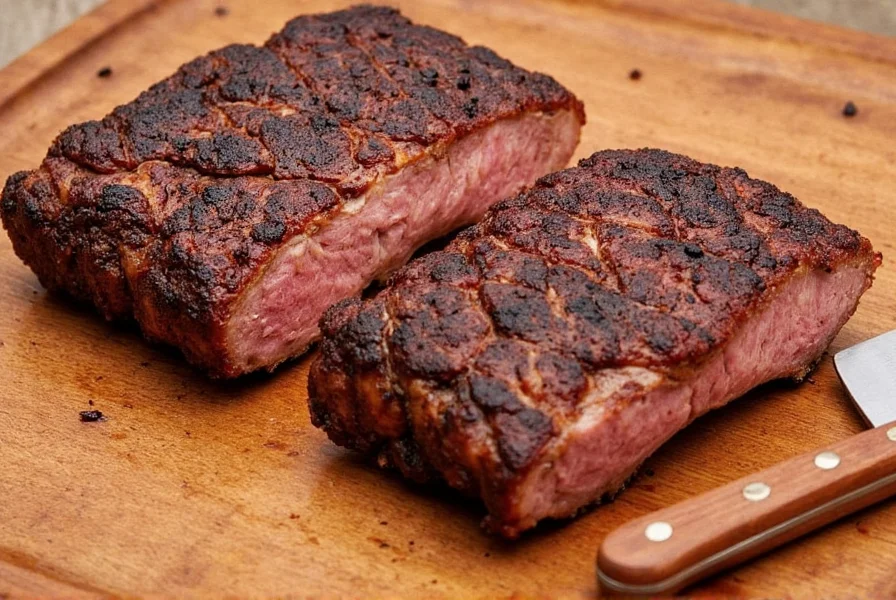
Common Temperature Mistakes to Avoid
- Mistake: Relying on cooking time instead of internal temperature
- Solution: Always use a thermometer—rib thickness varies significantly
- Mistake: Checking temperature too frequently (causes heat loss)
- Solution: Limit thermometer checks to every 30-60 minutes during final cooking stage
- Mistake: Measuring temperature in the wrong spot
- Solution: Insert probe into thickest part between bones, avoiding bone contact
Frequently Asked Temperature Questions
What's the minimum temperature for tender ribs?
190°F is the minimum temperature where significant collagen breakdown occurs. Below this, ribs remain chewy regardless of cooking time.
Can I cook ribs at 180°F?
No—180°F refers to cooking environment temperature, not internal meat temperature. Ribs cooked to 180°F internal will be tough. Aim for 190°F+ internal for tenderness.
How long to hold ribs at 200°F?
Ribs don't need holding time at 200°F—once they reach 190–205°F internally, remove immediately. Holding longer causes moisture loss.
Do ribs get more tender after 205°F?
No—beyond 205°F, muscle fibers contract excessively, squeezing out moisture and creating dry, stringy ribs.
What temp do competition BBQ teams use for ribs?
Professional BBQ teams consistently target 198±2°F internal temperature for optimal texture in competition ribs.
Temperature Troubleshooting Guide
Encountering issues with rib texture? Your temperature is likely the culprit:
- Problem: Ribs are tough despite long cooking time
- Cause: Internal temperature didn't reach 190°F minimum
- Solution: Continue cooking while monitoring internal temperature
- Problem: Ribs falling apart excessively
- Cause: Exceeded 205°F internal temperature
- Solution: Reduce cooking time in future batches
- Problem: Uneven texture (some parts tough, some dry)
- Cause: Inconsistent temperature distribution
- Solution: Rotate ribs periodically and use multiple thermometer probes
Final Temperature Tips for Perfect Ribs
Master rib temperature with these pro tips:
- Always let ribs rest 10-15 minutes after reaching target temperature—internal temp will rise 5°F naturally
- Wrap ribs in butcher paper when internal temp hits 160°F to speed through the stall phase
- For competition-style ribs, remove at exactly 198°F for perfect bend test results
- Calibrate your thermometer monthly for accuracy—a 5°F error makes a significant difference
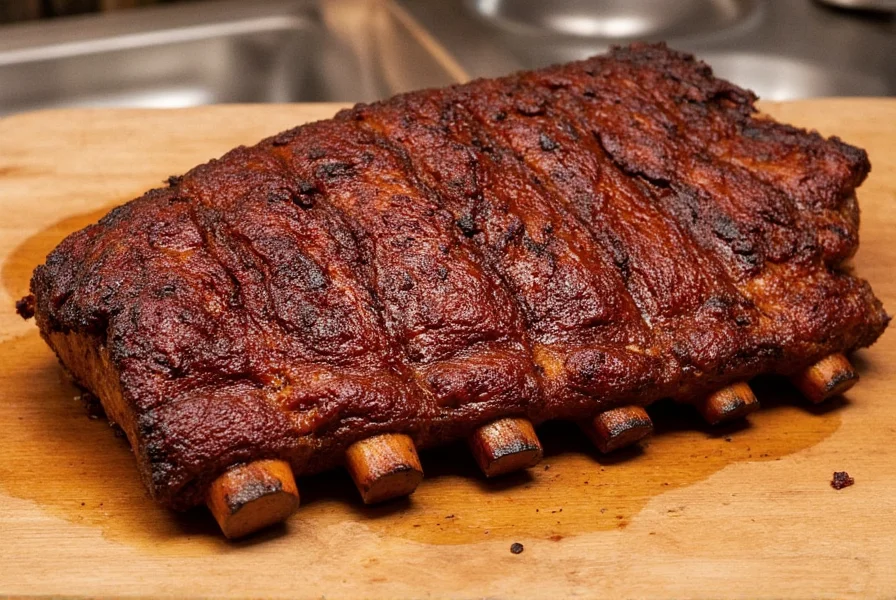
Temperature control transforms rib cooking from guesswork to a precise science. By targeting 190–205°F internal temperature and understanding how different cuts and methods affect heat transfer, you'll consistently achieve restaurant-quality ribs at home. Grab your thermometer, fire up your cooker, and prepare for the most tender, flavorful ribs you've ever made.

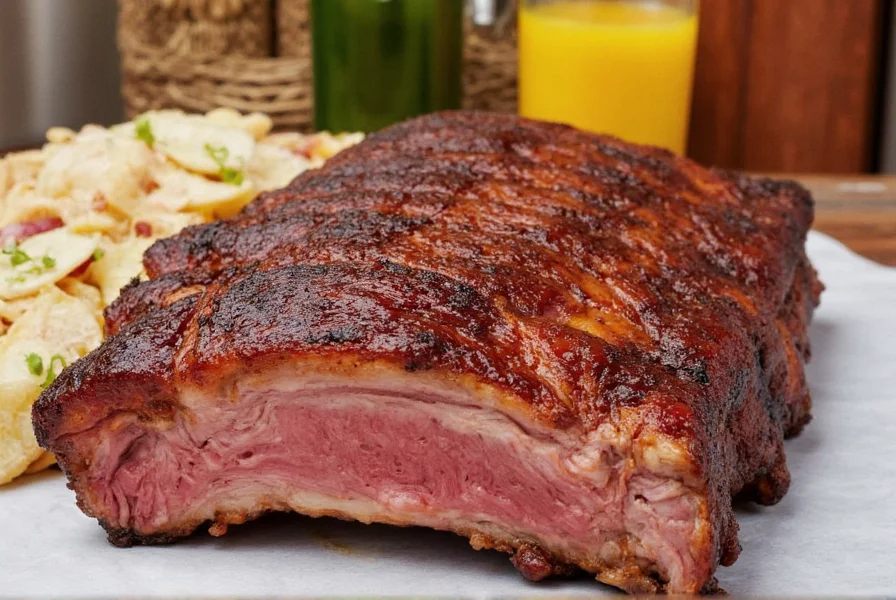









 浙公网安备
33010002000092号
浙公网安备
33010002000092号 浙B2-20120091-4
浙B2-20120091-4